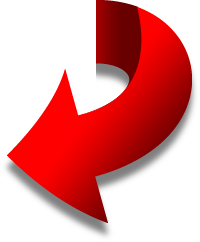Fire extinguishers are a vital component to the safety of a home or business. If a fire breaks out, extinguishing it quickly is vital as it can quickly spread out of control. There are several types of fire extinguishers, and using the right one is important, as certain types will not work well on certain fires.
In the United States there is no standardised colouring for different types of fire extinguishers; most are red, though water fire extinguishers are often silver in colour. However, extinguishers contain pictograms that point out what types of fires the extinguisher is suitable for.
There are several classes of fire that a fire extinguisher can handle, and many fire extinguishers are equipped to deal with multiple classes:
Class A – These fires are ordinary combustible materials like paper or wood.
Class B – Fires in this class include flammable liquid or gas.
Class C – Class C fires are those caused by electrical problems like fault wiring.
Class D – This class is reserved for combustible metals.
Class K – A class K fire is one caused by oil or fat, usually in the kitchen when cooking on a stove.
Fire extinguishers use various means to put out fires:
1. Dry Chemical – Dry chemical fire extinguishers fire a powder that is able to interfere with the chemical processes that make a fire burn, thus extinguishing the fire. Dry chemical extinguishers are generally used to combat class B and C fires, though some are available that can fight class A fires as well. One should examine the pictograms on the side to see if the extinguisher can combat class A fires.
2. Foam – These extinguishers spray an expanding sheet of foam that smothers the fire. Foam extinguishers are usually used for class A and B fires, though some are made to combat class D fires as well.
3. Water – Water fire extinguishers are usually only suitable for Class A fires. Water should not be used for oil based fires, as this can spread the fire around further due to the fact that water and oil do not mix. Water should almost never be used for electrical fires, as water is a conductor of electricity and could cause great harm or even death to someone trying to put out an electrical fire with one. With that being said, there are water extinguishers that use a misting nozzle to fire a non-continuous stream of water at an electrical fire. The lack of a continually firing stream of water ensures that the electricity cannot travel back up the stream to harm the wielder of the extinguisher.
4. Carbon Dioxide – Carbon Dioxide extinguishers remove oxygen from the surrounding area which causes the fire to be suffocated and can be used on class B and C fires.
5. Class D Extinguishers – Extinguishers made specifically to combat class D fires make use of certain metals and/or chemicals to suppress class D fires.
Fire extinguishers need to be regularly inspected to ensure they are in proper working order.
–
Felicity is a part-time scribe, writing occassional overviews in the UK about business security and safety matters. For fire supression devices, water fire extinguishers, fire alarm systems, carbon dioxide fire extinguishers and fire blankets then please visit our site for deals on fire alarms in the UK.
Source: http://www.articletrader.com






